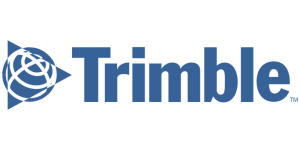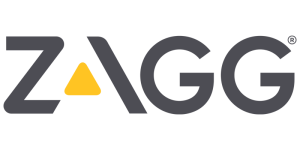How will Google’s algorithms recognize Black Hat SEO tactics in 2024?
In the ever-evolving landscape of digital marketing, staying ahead of the curve means not only embracing innovative strategies but also understanding the mechanisms that underpin search engine operations. As we edge closer to 2024, businesses and digital marketers alike are pondering one critical question: How will Google’s algorithms continue to evolve to recognize and penalize Black Hat SEO tactics? With Google’s increasingly sophisticated artificial intelligence and machine learning capabilities, the once dark corners of the web, where questionable SEO practices lurk, are being illuminated with a new level of scrutiny.
Enter JEMSU, a full-service digital advertising agency that has consistently stayed at the forefront of search engine marketing. At JEMSU, the focus is not only on delivering cutting-edge SEO strategies that drive organic traffic and leads but also on ensuring that these strategies are sustainable and ethical, aligning with Google’s stringent guidelines. As industry leaders, the team at JEMSU is well-versed in the nuances of Google’s algorithm changes and is poised to decode the future of Black Hat SEO detection. In 2024, as Google’s algorithms become even more advanced, JEMSU stands ready to help clients navigate this complex terrain and maintain a competitive edge in a fair and honest digital marketplace.
The anticipation of Google’s next moves has always been a topic of intense speculation and strategic planning in the SEO community. But with potential advancements like real-time algorithm updates and predictive behavior modeling, the game is set to change dramatically. JEMSU’s commitment to ethical SEO practices means that their clients can rest assured that their digital footprint is both compliant and future-proofed against the impending algorithmic shifts. As we delve deeper into this topic, we’ll explore how the convergence of technology and principled SEO can create a transparent ecosystem that rewards integrity and punishes digital deceit.
Table of Contents
1. Search Engine Algorithm Updates and Changes
2. Artificial Intelligence and Machine Learning in SEO Monitoring
3. Link Quality and Backlink Profile Analysis
4. Content Quality and Relevance Assessment
5. User Interaction Signals and Behavioral Analysis
6. Technical SEO and Website Compliance Checks
7. FAQs
Instant SEO Checker + Score & Report
Enter the URL of any landing page to see how optimized it is for one keyword or phrase...
Search Engine Algorithm Updates and Changes
In the ever-evolving landscape of SEO, staying ahead of the curve is essential for any digital marketing agency, including JEMSU. As we look towards 2024, Google’s algorithms are expected to become even more sophisticated in identifying and penalizing Black Hat SEO tactics. These algorithm updates and changes are designed to maintain the integrity and relevancy of search results, rewarding those who adhere to White Hat SEO strategies and penalizing those who attempt to manipulate rankings through deceptive practices.
Search engine algorithms are not static; they are continually updated in response to new search patterns, technologies, and the detection of exploitative SEO tactics. Google’s commitment to delivering the best user experience means that their algorithms must adapt to discern quality content from manipulative techniques. These changes often occur iteratively and can sometimes roll out in major updates that significantly impact search rankings.
For instance, consider the analogy of a game of cat and mouse. Black Hat SEO practitioners are constantly finding new loopholes to exploit, much like a mouse finding different routes to cheese. Google, the vigilant cat in this scenario, continuously updates its algorithm to catch these tactics and ensure they don’t undermine the search experience for users.
As a proactive measure, JEMSU stays abreast of these changes by closely monitoring official Google announcements and industry analysis. This vigilance allows us to adapt our strategies to align with the latest best practices. An example of such adaptation is the shift from keyword stuffing—a common Black Hat technique—to a focus on topic clusters and user intent, which emerged following updates that penalize over-optimized content.
While specific stats on the frequency of algorithm changes are not always publicly disclosed, it’s widely recognized that Google makes thousands of updates each year. These can range from minor tweaks to significant overhauls, all in the pursuit of delivering the most relevant and high-quality search results.
Through continuous education and adaptation, JEMSU ensures that our clients’ SEO strategies remain effective and ethical, safeguarding their online presence against the potential negative impacts of search engine algorithm updates and changes.
Google Ads Success Example
The Challenge: The Challenge: Increase new dental patients with better Google Ads campaigns.
Artificial Intelligence and Machine Learning in SEO Monitoring
The realm of SEO is perpetually evolving, and with the advent of artificial intelligence (AI) and machine learning (ML), Google’s algorithms are becoming increasingly sophisticated. In 2024, AI and ML are expected to play a pivotal role in detecting and penalizing Black Hat SEO tactics. Agencies like JEMSU are on the forefront of adapting to these advancements, ensuring that SEO strategies not only comply with the latest guidelines but also leverage the power of AI to improve organic search performance.
AI and ML algorithms can analyze vast datasets with incredible speed and accuracy, identifying patterns and anomalies that may indicate manipulative practices. For example, an AI system could scrutinize a website’s link-building patterns over time, flagging unnatural spikes that suggest a possible purchase of backlinks—a common Black Hat SEO technique. Furthermore, AI-driven content analysis tools can discern between high-quality, relevant content and keyword-stuffed articles designed to game the search engine rankings.
One of the analogies often used to describe AI’s role in SEO is that of a highly skilled detective. Just as a detective pieces together clues to solve a mystery, AI algorithms sift through the digital footprint of a website to uncover the truth behind its search engine rankings. Machine learning, in particular, is like a detective who learns from every case they solve, becoming more adept at recognizing the signs of Black Hat SEO over time.
JEMSU understands that keeping up with these technological advancements is critical. As stated by a leading industry expert, “The future of SEO is not about trying to outsmart algorithms; it’s about working with them.” This mindset is fundamental for success in a landscape where 40% of marketing leaders believe AI and machine learning are the most critical technologies for achieving their goals, according to a recent Salesforce survey.
By embracing AI and ML in SEO monitoring, JEMSU helps clients maintain ethical optimization practices while reaping the benefits of top-tier search engine performance. As Google’s algorithms continue to evolve, the success of digital marketing agencies will increasingly depend on their ability to adapt and integrate these cutting-edge technologies into their SEO strategies.
Link Quality and Backlink Profile Analysis
Understanding the significance of link quality and backlink profile analysis is critical in the realm of SEO, and it’s an area where digital advertising agencies like JEMSU play a pivotal role. In 2024, Google’s algorithms are expected to become even more proficient at distinguishing between natural, high-quality backlinks and those that are artificially created to manipulate rankings. As Google continues to enhance its algorithm, it will likely scrutinize the relevance, authority, and trustworthiness of the websites that link to a page, using these factors to inform the page’s ranking.
At JEMSU, our approach to building a client’s backlink profile involves focusing on the quality of links rather than just the quantity. This strategy aligns with the anticipated trajectory of Google’s algorithms, which are progressively getting better at identifying and penalizing black hat SEO tactics like link farms, paid links, and other inauthentic means of generating backlinks.
Consider the analogy of a professional network: just as the value of your network is determined not just by the number of connections, but by the quality and influence of those connections, so too is the value of a website’s backlink profile determined by the quality and relevance of the sites that link to it.
To illustrate the importance of link quality, let’s look at an example. Suppose a health and wellness blog receives a backlink from a respected medical institution, such as the Mayo Clinic or Johns Hopkins. This single backlink could be far more beneficial than dozens of links from obscure, unrelated websites. JEMSU helps clients secure such esteemed links by creating high-quality, authoritative content that naturally attracts backlinks from reputable sources.
An essential part of our work at JEMSU involves conducting thorough backlink profile analyses for our clients. This process entails weeding out toxic links that could harm their search engine rankings and nurturing the kind of high-quality backlinks that search engines favor. With Google’s algorithms rapidly evolving, staying ahead of the curve in link quality and backlink profile analysis will continue to be a cornerstone of effective SEO strategy.
SEO Success Story
The Challenge: The Challenge: Design an SEO friendly website for a new pediatric dentist office. Increase new patient acquisitions via organic traffic and paid search traffic. Build customer & brand validation acquiring & marketing 5 star reviews.
Content Quality and Relevance Assessment
Assessing content quality and relevance has always been a cornerstone of Google’s algorithms, and by 2024, we anticipate these assessments to become even more sophisticated. At JEMSU, we understand that Google’s ever-evolving algorithms are designed to prioritize content that provides real value to users. In the realm of digital marketing, this means that the content we produce for our clients must not only be well-written but also rich in information and pertinent to the searcher’s intent.
One critical aspect that is likely to be emphasized is the depth of content. Google’s algorithms may evaluate whether a piece of content thoroughly covers a topic rather than merely skimming the surface. For example, an article about ‘The Best Practices for Email Marketing’ would need to go beyond basic tips, perhaps by incorporating case studies or industry-specific statistics that demonstrate the effectiveness of certain strategies.
To illustrate the importance of content relevance, consider the analogy of a library. Just as a librarian curates books to ensure that they are not only factual but also relevant to the community’s interests, Google aims to index content that is most relevant to users’ queries. JEMSU always keeps this in mind when creating content strategies, ensuring that what we produce aligns with what users are actively searching for, much like a librarian who understands the unique needs of their library’s patrons.
Furthermore, it’s not just about the text on the page. In 2024, we expect Google to continue to refine how it assesses multimedia content such as videos, images, and podcasts. Engagement metrics like the amount of time users spend with content could also play a significant role. For instance, a well-produced video that keeps viewers watching until the end is likely a signal of quality and relevance, and Google’s algorithms will take note of these user interaction signals.
At JEMSU, we always emphasize the importance of crafting content that serves a purpose and fulfills the search intent. As we look toward the future, we remain committed to staying ahead of the curve in understanding and adapting to Google’s advancements in content quality and relevance assessment. By doing so, we ensure that the digital presence of our clients is not only visible but also valuable and engaging to their target audiences.
Jemsu has been a great asset for us. The results have grown at strong positive linear rate. They have been extremely accessible, flexible, and very open about everything. Natalya is a star example of how to work with your accounts to drive them forward and adjusts to their quirks. Jaime is able to clearly communicate all of the work that is being done behind the scenes and make sure that all of my team is understanding.
I couldn’t be more pleased with my JEMSU Marketing Team!
Julia, Tamara, Joelle and Dally have exceeded my expectations in professionalism, creativity, organization, and turn around time with my Social Media Management project.
I have thoroughly enjoyed sharing my journey with this team of empowered women!
Thank you JEMSU! Your team designed and launched my new website, and developed strategies to drive traffic to my site, which has increased my sales. I highly recommend your Website & SEO Agency!
Jemsu has always been professional and wonderful to work with on both the SEO and website design side. They are responsive and take the time to explain to us the complicated world of SEO.
Jemsu is an excellent company to work with. Our new website blows away our competition! Unique, smooth, and flawless. Definite wow factor!
The folks at JEMSU were excellent in designing and launching our new website. The process was well laid out and executed. I could not be happier with the end product and would highly recommend them to anyone.
Jemsu is a great company to work with. Two prong approach with a new site and SEO. They totally redesigned my website to be more market specific, responsive, and mobile friendly. SEO strategy is broad based and starting to kick in. My marketing will also be adding Facebook and Google ads in the coming weeks. Thanks for your all you hard work.
JEMSU has wworked with our team to create a successful campaign including incorporating an overall rebranding of our multiple solutions. The JEMSU team is embracing of our vision and responds timely with life of our ideas.
JEMSU is great company to work with. They listen & really work hard to produce results. Johnathan & Sasha were such a big help. If you have a question or concern they are always there for you.
I would definitely recommend them to anyone looking to grow their company through adwords campaigns.
Jemsu have exceeded our expectations across all of our digital marketing requirements, and I would recommend their services to anyone who needs expertise in the digital marketing space.
JEMSU was able to quickly migrate my site to a new host and fix all my indexation issue. I look forward to growing my services with JEMSU as I gain traffic. It’s a real pleasure working with Julian and Juan, they’re both very professional, courteous and helpful.
JEMSU is incredible. The entire team Is professional, they don’t miss a deadlines and produce stellar work. I highly recommend Chris, Rianne, and their entire team.
We’ve been working with JEMSU for about five months and couldn’t be happier with the outcome. Our traffic is up and our leads are increasing in quality and quantity by the month. My only regret is not finding them sooner! They’re worth every penny!
User Interaction Signals and Behavioral Analysis
Understanding user interaction signals and behavioral analysis is becoming increasingly important for search engine optimization (SEO). In the context of Google’s algorithms, these signals refer to how users interact with websites and content. This includes metrics such as click-through rates (CTRs), time spent on a page, bounce rates, and the rate at which users return to the search engine after visiting a site. By analyzing these interactions, Google can get a better sense of which websites provide value to users and satisfy their search intent.
At JEMSU, we recognize that the way users engage with content can significantly impact a website’s search engine rankings. For instance, if a high number of users leave a page quickly after arriving (a high bounce rate), it could indicate that the content is not relevant or engaging, leading Google to potentially downgrade its ranking. Conversely, if users spend a significant amount of time on a page and navigate to other pages within the same site, this can be a positive signal of the content’s relevancy and quality.
To illustrate, consider a user searching for “best digital marketing strategies.” If the user clicks on a JEMSU article and spends several minutes reading the content, shares it on social media, or navigates to related articles, this behavior sends positive signals to Google that the content is valuable and relevant to the query. These user interaction metrics are analogous to customers browsing in a store; the more time they spend looking at products and the more products they consider purchasing, the more likely it is that they are having a positive shopping experience.
Google’s algorithms are expected to continue evolving, potentially using advanced machine learning techniques to interpret these signals with greater nuance. As a result, SEO strategies must adapt to prioritize not only the creation of high-quality content but also the enhancement of user experience to encourage positive interaction signals. It is essential for businesses to monitor how users interact with their website and continually optimize to meet the needs of their audience. JEMSU stays at the forefront of SEO trends, ensuring that our clients’ digital strategies account for the latest in user interaction analysis to maintain competitive search rankings.
SEO Success Story
The Challenge: Increase dent repair and body damage bookings via better organic visibility and traffic.
Technical SEO and Website Compliance Checks
In the realm of SEO, technical compliance is a cornerstone for website performance, especially when it comes to adhering to the guidelines set by search engines. At JEMSU, we understand that by 2024, Google’s algorithms will likely have evolved to become even more sophisticated in identifying and penalizing websites that do not comply with their technical SEO standards. This includes a broad spectrum of elements such as site speed, mobile-friendliness, secure connections (HTTPS), structured data, and canonical URLs, among others.
For example, if a website has a slow loading speed, it not only affects user experience but can also be identified by Google’s algorithms as a negative ranking factor. With the increased focus on user experience (UX) signals, the speed at which pages load becomes crucial. Statistics have shown that websites with faster loading times tend to perform better in search rankings. A study by Google found that as page load time goes from one second to ten seconds, the probability of a mobile site visitor bouncing increases by 123%. Therefore, JEMSU places significant emphasis on optimizing clients’ website speeds to ensure they meet and exceed Google’s performance expectations.
Furthermore, with the growing importance of mobile-first indexing, JEMSU diligently works on ensuring that all websites are optimized for mobile users. This involves creating responsive designs and checking that the content is easily accessible on smaller screens. Failure to comply with mobile optimization can lead to a website being less favored by Google’s updated algorithms.
Another analogy to consider is that of building a house; the structural integrity of the house depends on its compliance with building codes and standards. Similarly, technical SEO is like the foundation of a website. If the foundation is not solid (i.e., the website is not technically sound), the entire structure (the website’s search ranking) can be compromised. Google’s algorithms, much like a building inspector, will check for these compliance issues and could potentially ‘condemn’ a site by pushing it down in search rankings if it fails to meet the necessary standards.
JEMSU stays ahead of the curve by continuously monitoring and implementing the latest technical SEO best practices. We conduct thorough website compliance checks for our clients, ensuring that their sites are up to scratch with Google’s ever-evolving algorithms. By doing so, we safeguard our clients’ online visibility and help them maintain a competitive edge in the digital landscape.
FAQS – How will Google’s algorithms recognize Black Hat SEO tactics in 2024?
Please note that predicting specific changes to Google’s algorithms is speculative, and my answers are based on the trends and principles that Google has historically followed up until my knowledge cutoff in 2023. Here are ten questions related to the topic, along with their answers:
1. **What are Black Hat SEO tactics?**
Black Hat SEO refers to aggressive and deceptive practices that attempt to manipulate search engine rankings in ways that violate search engines’ terms of service. Examples include keyword stuffing, cloaking, using private link networks, and content scraping.
2. **How does Google currently detect Black Hat SEO tactics?**
Google uses a combination of algorithmic checks and manual reviews to detect Black Hat SEO. Algorithms look for unnatural patterns, such as rapid link acquisition, over-optimization of keywords, and cloaking, while manual reviewers check for violations reported by users or detected by the algorithms.
3. **Will AI and machine learning play a bigger role in detecting Black Hat SEO in 2024?**
Yes, it is likely that AI and machine learning will continue to become more sophisticated and play an even larger role in detecting Black Hat SEO. These technologies enable Google to understand context and user intent better, making it harder for manipulative tactics to go unnoticed.
4. **Can Google’s algorithms penalize sites using Black Hat SEO unintentionally?**
While Google aims to target intentional manipulators, sometimes websites can be penalized for practices that seem manipulative even if there was no such intention. It is crucial for webmasters to stay informed about SEO best practices to avoid accidental penalties.
5. **What should I do if my site is penalized for Black Hat SEO?**
If your site is penalized, Google will typically notify you through the Google Search Console. To recover, you should remove or correct the manipulative tactics, submit a reconsideration request to Google, and commit to following White Hat SEO practices moving forward.
6. **How often does Google update its algorithms to combat Black Hat SEO?**
Google continuously updates its algorithms to improve search quality and combat Black Hat SEO. Major updates are announced periodically, but minor changes and tweaks happen more frequently and may not always be publicized.
7. **Can Black Hat SEO tactics ever be effective in the long term?**
Generally, Black Hat SEO tactics are considered high-risk and unsustainable in the long term. While they may provide short-term gains, Google’s algorithms are designed to eventually catch and penalize such tactics, often resulting in a loss of rankings and traffic.
8. **Is there a way to report Black Hat SEO to Google?**
Yes, Google allows users to report webspam through their webspam report form. This includes reporting Black Hat SEO tactics such as hidden text, keyword stuffing, or cloaking.
9. **How can I protect my site from being affected by Black Hat SEO competitors?**
To protect your site, monitor your backlink profile regularly using tools like Google Search Console and disavow any spammy or low-quality links. Keep an eye on your SEO practices and ensure they comply with Google’s guidelines.
10. **Will Google’s algorithm updates be more transparent in 2024?**
Google has historically been somewhat transparent about its major algorithm updates, providing information to help webmasters understand the changes and how to align with them. Whether this transparency will increase in 2024 is uncertain, but Google tends to communicate changes that have significant effects on search results.
Remember that staying informed about Google’s Webmaster Guidelines and following ethical, user-focused SEO strategies are the best ways to ensure long-term success in search engine rankings.
SEO Success Story
The Challenge: Increase new dental patients with better organic visibility and traffic.















